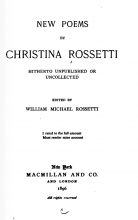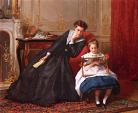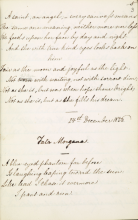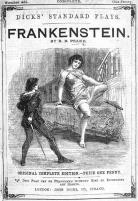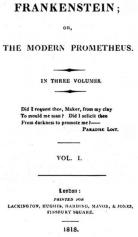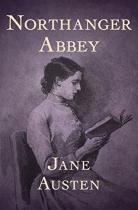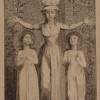Women Writers of the 18th and 19th Centuries
Created by Shannon Scott on Sat, 01/23/2021 - 22:36
Part of Group:
Featuring women writers of course texts.
Timeline
Chronological table
|
Date |
Event | Created by | Associated Places | |
|---|---|---|---|---|
| Jun 2014 |
Ending of The Autobiography of Jane EyreEpisode 95 of The Autobiography of Jane Eyre ends with the notable line of Jane Eyre altered. She ends with, "Dear viewer, I made a home" instead of, "Reader, I married him” (Endings). The focus on the last episode separates from the love story followed to the end in the original novel, and instead brings attention to Jane's own growth, self-worth, and goals: a change that models Jane as a feminist icon focused on herself. Through reading comments, I realized the original Rochester left the cast. I do wonder if this changed the web series ending, or if they always intended to take an arguably more modern, feminist approach to the Jane Eyre love story, where Jane gets back to Rochester, even after the revealed deceit. With this change in the line, the web series gave more agency to Jane. The series made her own personal accomplishments and goals the focus, rather than her title as lover, wife, partner, or mother being the focal point.
For further reading and analysis on the ways Jane Eyre addresses readers directly and indirectly, consider reading “‘Reader, I Married Him’: 19th Century Reading Practices, Reading, and Readers in Charlotte Brontë’s Jane Eyre” by Corinna Norrick. This article discusses how “Jane’s reader addresses have become a classic feature of the novel Jane Eyre – the most prominent example, of course, is her confession: “Reader, I married him” (Brontë 411). In fact, this line is so prominent that in a manuscript of the novel displayed in the British Library, the notebook is turned to the page with this address (Sir John Ritblat Gallery: Treasures of the British Library; as of June 2010). There with, she completes the series of reader addresses that have played a continuing and significant role throughout the whole novel. In dealing with the novel Jane Eyre, we are confronted with an implied reader. By choosing to address her reader directly, the autobiographer acknowledges the reader’s presence and position within the levels of reading pertaining to Jane Eyre. However, the reader addresses go beyond a simple recognition of the fact that someone is reading the novel – they also serve to draw the reader into the novel, to invite the reader to partake in the emotions felt by the narrator, to form a seemingly realistic bond between the autobiographer and her audience” (Norrick 69).
Bibliography: “Endings – Ep: 95” YouTube, uploaded by Jane Eyre, 21 June 2014, https://www.youtube.com/watch?v=FclkWGdX4qo.
Norrick, Corinna. “‘Reader, I Married Him’: 19th Century Reading Practices, Reading, and Readers in Charlotte Brontë’s Jane Eyre.” International Journal of the Book, vol. 8, no. 1, 2011, pp. 67–75. EBSCOhost, search.ebscohost.com/login.aspx?direct=true&db=mzh&AN=2013309760&site=ehost-live.
|
Brittany Atkinson | ||
| 1896 |
New Poems by Christina Rossetti publishedIn 1896, following Christina Rossetti's death in 1894, William Michael Rossetti edited and published New Poems by Christina Rossetti. The collection included "hitherto unpublished or uncollected" poetry by C. Rossetti, including, notably, the sonnet, "In an Artist's Studio," about her brother Dante Gabriel Rossetti's relationship with Elizabeth Siddal. |
Dino Franco Felluga | ||
| 1868 |
(DUPLICATE) Position of the Governess in Victorian SocietyIn The Half-Caste, the narrator of the story finds herself in a little bit of a quandary concerning the income of both she and her mother. Cassandra must find work in order to support herself and her mother, so she is thrust into the job of governess. She did not go to school to become a governess, but from the education she received because of her class status, she is able to scrape by and become an adequate governess for the Pryors. However, in appendix C–which deals with the role of the Victorian Governess–we find out more about the contemporary qualities that were desired in a governess at the time: “There are strong objections in the minds of some, to a lady who is compelled unexpectedly to teach, and to teach just for a living” (Craik, 144). According to this source, the circumstances that lead Cassandra to become a governess were less than ideal. She was not fully equipped to assume the role of governess. Despite some of these sentiments floating around at the time, Craik creates Cassandra to be an adept governess that looks out for the well-being of her pupil, Zillah. Craik, Dinah Mulock. The Half-Caste, edited by Melissa Edmundson. Appendix C, From Emily Peart, A Book for Governesses (Edinburgh: W. Oliphant, [1868]), 9-22. Broadview Editions, 2016. |
Brennan Ernst | ||
| Mar 1862 |
Goblin Market and Other Poems PublishedGoblin Market is a Victorian narrative poem written by Christina Rossetti and illustrated by her brother Dante Gabriel. Rossetti felt that the collaboration with her brother was crucial to her overall work, that she deliberately delayed the publication until Dante Garbiel’s illustrations were ready for press. He designed a total of two illustrations, the frontispiece and title page, for The Goblin Market. Both images were pressed using wood engravings, evoking the pre-raphaelite designs popular during the 1860’s. The passages appeal to the senses through vivid descriptions of colours, textures, aromas and taste. Critics assigned the poem to various general categories over the following decades and throughout the twentieth century. It was first viewed as a fairytale but was later viewed as an allegorical piece. Feminist critics often analyzed the poem’s social commentary on gender relations and the relationship between two sisters. Later in the nineteenth century, readers, reviewers, illustrators, and composers began to focus on the poem’s powerful aesthetic qualities. Its sensuous patterns, religious images, and social implications inspired the focus of school studies and as well as musical settings and performances. The power of its visual images, and the two wood-engraved designs by Dante Gabriel Rossetti in the poem’s first publication, turned to evoke numerous artistic interpretations, ranging from stained glass windows to gift books.
Curated by Kisha Rendon, Joseph Pereira, and Payton Flood Public Domain; source: COVE Goblin Market edition by Lorraine Janzen Kooistra, Antony Harrison |
Payton Flood | ||
| Dec 1856 |
Christina Rossetti writes "In an Artist's Studio"In December 1856, Christina Rossetti composed "In an Artist's Studio." Image: fair copy manuscript of the poem, second page (Ashley MS 1364, British Library, public domain). The poem was published posthumously by William Michael Rossetti in 1896. |
Dino Franco Felluga | ||
| Spring 1853 |
Rossetti familty moves to Frome, SomersetIn Spring 1853, Frances Rossetti and her daughter, Christina Rossetti, went to Frome, Somerset to start a school, followed by Gabriele Rossetti (Christina's father); however, the school was not successful and the family soon moved back to London. |
Dino Franco Felluga | ||
| Jan 1851 |
Rossetti family moves to Arlington St.In January 1851, the Rossetti family moved to 38 Arlington Street, where for a short time Frances Rossetti (the mother of Dante Gabriel and Christina Rossetti) ran a day school. Christina Rossetti served as an assistant during this time. |
Dino Franco Felluga | ||
| 16 May 1835 |
Felicia Dorothea Browne's Death DateFelicia Dorothea Browne (Mrs. Hemans) was an English poet, born in Liverpool. Her poem "I Dream of All Things Free" was published in The Slave's Friend. She married Mr. Hemans and had five sons.
|
Anmol Patel | ||
| 5 Dec 1830 |
Birth of Christina Georgina RossettiChristina Rossetti was born on 5 December 1830 at 38 Charlotte Street (now 105 Hallam Street) in Marylbone, London to Gabriele Rossetti and Frances Polidori. |
Dino Franco Felluga | ||
| Jul 1824 |
Improvisatrice and Other Poems
Related ArticlesAngela Esterhammer, “1824: Improvisation, Speculation, and Identity-Construction” |
David Rettenmaier | ||
| 1823 |
Mary Shelley's FrankensteinThe first edition of Mary Shelley's Frankenstein was published anonymously in 1818, but the version with her name on the cover wasn't published until 1823. Shelley gained inspiration from traveling around Europe with future husband Percy Shelley and Lord Byron. They participated in ghost story telling competitions while traveling around, which is where some of her inspiration came from. Frankenstein tells the tale of Victor Frankenstein, a young scientist who creates a hideous creature and the trials of the creature after being abandoned by Frankenstein. The novel implements the frame story narrative style of storytelling, which was unique at the time. Her novel fuses together the genres of Gothic fiction with the notions of the Romantic movement. It's also seen as early science fiction work. The idea for the novel came to Shelley in a dream that later became the basis for Frankenstein. Mary Shelley's novel was hugely influential on the world of science fiction and horror. Image source: http://frankensteinia.blogspot.com/2008/08/mary-shelley-meets-frankenste... |
Caroline Brown | ||
| 1 Jan 1818 |
Frankenstein; or, The Modern PrometheusMary Shelley releases the first edition of Frankenstein. The more popular modern version was released on October 31, 1831, which includes the introduction that explains the novel's origins at Villa Diodati. Frankenstein follows many tenets of Romanticism and takes much influence from Milton's Paradise Lost, which is quoted to open to novel and is read by Frankenstein's monster during the events that take place. The novel focuses on a number of themes, one of the most prominent of which is the idea of "nature against nurture" (itself a key idea of Shelley's mother Mary Wollstonecraft's Vindication of the Rights of Women). Contrary to thinking in oral or even medieval societies, Romanticism, where characters are unchanging, readers are encouraged to ask the question on what would have happened to the monster had Frankenstein not screamed and ran away from it. The monster shows the ability to be a monster, but it also shows the ability to show empathy and care. The scientist Frankenstein himself worries constantly about the wholly unnatural creature that he has brought into the natural world and what should happen if he gives the monster what it wants - someone to love. Much like the thought of Romanticism that perhaps Satan was the party in the right during Paradise Lost, the monster's growth mentally and emotionally with his own deeply flawed Maker in Frankenstein invites to question the rights of the individual. The vivid descriptions of nature and the thought-provoking themes of the novel make it a standout of the Romantic era and a phenomenal story to this day. |
Mark Magurany | ||
| circa. Oct 1807 |
Jane Arrives at ThornfieldJane arrives at Thornfield months before she actually meets Mr. Rochester as indicated in Chapter 12 when the narrator states, "October, November, December passed away" prior to Jane's unfortunate first encounter with Mr. Rochester (Bronte 131). This is significant because it allows the narrator and therefore the reader to contrast the atmosphere of Thornfield Hall and Jane's moods when Mr. Rochester is present compared to the months prior when he was away from his estate. This is also important foreshadowing because it supports Ms. Fairfax's claims that Rochester is very rarely in his home, which readers later learn is due to the melancholy he feels being in the same place as his captive first wife. Bronte, Charlotte. Jane Eyre. Barnes and Noble Classics, 2003. |
madison rahner | ||
| 1803 |
Austen Writes Northanger AbbeyNorthanger Abbey, written in 1803, was Austen's first completed novel, but it was published posthumously in 1817 along with Persuasion. In contrast with her other work, this novel comments and satirizes Gothic romance rather than fitting into the aesthetic of Regency literature we attribute to her other work. "Overview: Northanger Abbey." Novels for Students, edited by Ira Mark Milne, vol. 28, Gale, 2009. Gale Literature Resource Center, https://link.gale.com/apps/doc/H1430006641/LitRC?u=sand82993&sid=LitRC&x.... Accessed 17 Nov. 2020. https://link.gale.com/apps/doc/H1430006641/LitRC?u=sand82993&sid=LitRC&x... |
Anthony Calvez | ||
| Jan 1798 |
Memoirs of the Author of a VindicationOn January 1798, publication of William Godwin’s Memoirs of the Author of A Vindication of the Rights of Woman. The publication of this first biography of Wollstonecraft causes a scandal and Godwin publishes a second “corrected” edition of the Memoirs in the summer of the same year. ArticlesRelated ArticlesAnne K. Mellor, "On the Publication of A Vindication of the Rights of Woman" |
David Rettenmaier | ||
| 10 Sep 1797 |
Death of Wollstonecraft
ArticlesAnne K. Mellor, "On the Publication of A Vindication of the Rights of Woman" |
David Rettenmaier | ||
| 1 Jan 1792 |
Vindication of the Rights of Woman
ArticlesAnne K. Mellor, "On the Publication of A Vindication of the Rights of Woman" Related Articles |
David Rettenmaier |

